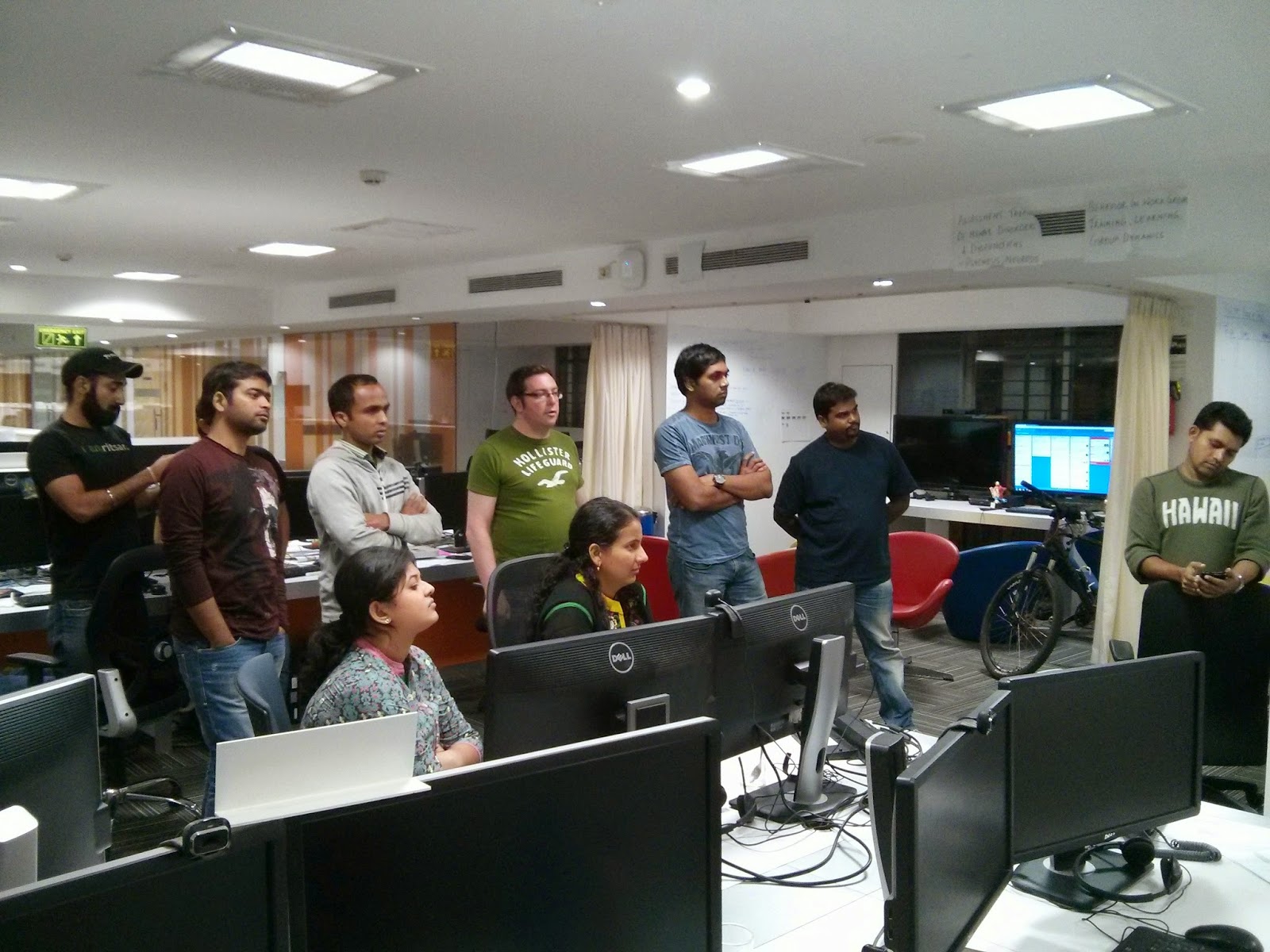In the world of Agile Software Development, we are always trying to find ways of delivering valuable software to customers quicker and more efficiently.
One way we try to achieve this is by delivering frequently to our Testers, Product Owners and End Users. This allows us to get feedback on our progress and either change direction or confirm the direction in which we are going.
Back in March when I was in Melbourne (Australia) we were lucky enough to be joined by Alistair Cockburn, who lead a series of workshops with our product and engineering team members.
One exercise which I found particularly interesting (and just plain fun!) was his Elephant Carpaccio Exercise. The premise behind this exercise is to help people recognise (and experience first hand) the benefits of small stories. I decided that while I was in Bangalore, I would attempt to run the exercise not only for our Aconex product and engineering teams, but also invite external participants!
The general feedback from the participants was that both product and development team members learnt a lot from the exercise.
Description of the exercise: http://alistair.cockburn.us/Elephant+Carpaccio
Facilitator’s guide (includes link to handout):
https://docs.google.com/document/d/1TCuuu-8Mm14oxsOnlk8DqfZAA1cvtYu9WGv67Yj_sSk/pub
Here are a few photos from the session run in Bangalore:
One way we try to achieve this is by delivering frequently to our Testers, Product Owners and End Users. This allows us to get feedback on our progress and either change direction or confirm the direction in which we are going.
Back in March when I was in Melbourne (Australia) we were lucky enough to be joined by Alistair Cockburn, who lead a series of workshops with our product and engineering team members.
One exercise which I found particularly interesting (and just plain fun!) was his Elephant Carpaccio Exercise. The premise behind this exercise is to help people recognise (and experience first hand) the benefits of small stories. I decided that while I was in Bangalore, I would attempt to run the exercise not only for our Aconex product and engineering teams, but also invite external participants!
The general feedback from the participants was that both product and development team members learnt a lot from the exercise.
Description of the exercise: http://alistair.cockburn.us/Elephant+Carpaccio
Facilitator’s guide (includes link to handout):
https://docs.google.com/document/d/1TCuuu-8Mm14oxsOnlk8DqfZAA1cvtYu9WGv67Yj_sSk/pub
Since I have both participated in the exercise as a programmer and facilitated, I thought I would list out a few potential improvements:
- Explain Iterative vs Incremental delivery, using the popular Mona Lisa example http://www.infoq.com/news/2008/01/iterating-and-incrementing (I think this is a better example of how to slice stories than the gui/client/backend example in the facilitator’s guide. Talking about a backend can be misleading for the programmers about to write a very simple app that needs no real backend).
- Ban the use of MS Excel, because it may mean you miss the point of the programming exercise.
- Sign off the list of stories with facilitator before starting code; make sure they are WRITTEN down (write down total stories for each team on a table on a whiteboard or butcher's paper).
- Ensure each team gets sign off (an actual written signature) against each story in the list (from another team) for each story completed/demonstrated.
- Write down number of stories signed off in the team table (see last photo below). This gives you an idea of the varied velocity for each sprint, per team.
My terrible attempt at explaining Iterative vs Incremental delivery:
Uh oh! Stack Overflow!
The final scoreboard:















Comments